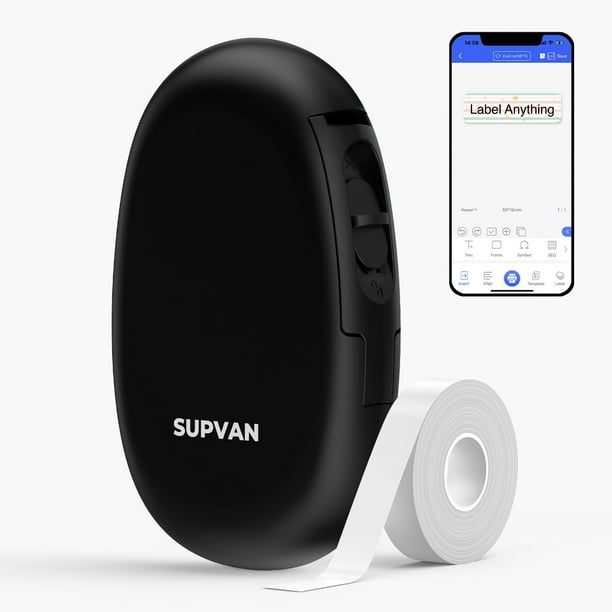Manual testing—people doing test cases—is essential for software testing. The human touch is vital for usability testing among real users, even when automated testing is efficient and cost-effective. Before automating, software development requires manual testing; 100% automation isn’t always possible.
Guaranteeing product quality and customer satisfaction requires manual software testing. This article outlines why manual testing is needed and the benefits of different types.
Manual Testing: What Is It?
Manual testing refers to running test cases in software testing by hand rather than using an automated tool.
Manual testing verifies that an application meets the specified requirements. Due to the lack of standard reporting of requirements, it can also function as an end user by taking responsibility for the application’s usefulness throughout exploration.
By confirming the end-user’s needs, an analyst can understand the product and setup of most trials while employing the exploratory testing approach. Before further investigating this, let’s look at the foundation of manual testing. This article portrays numerous types of manual testing.
Manual Testing Is Necessary, But Why?
Although automated testing is becoming increasingly popular among software professionals, Manual Testing Training is still necessary for many reasons, especially given the current state of the software business. Not many of them are
Human Point of View:
Only humans can see and judge the app’s fundamental usability and aesthetics. Because people are the only ones who can truly understand and appreciate the user experience when creating software, they are the best candidates to validate it.
A Larger View And System Workflow Variation:
Always look at the big picture when doing manual verification. The human mind is not a coded mechanism that repeats processes; rather, it is inherently curious and open to new experiences. The system validation will so benefit from its broader coverage.
Automation Expense:
At times, when the manual testing projects scope or timetable makes it impossible to justify the time and effort needed for automation testing, they always opt for a rapid manual validation instead.
Non-Automatable Events:
There are a lot of situations when automating the testing process isn’t worth it or where the results need to provide more assurance about the user’s behaviour. Take “Tap & Pay” as an example; it’s only one of many mobile scenarios that require user involvement and can exhibit different behaviour when checked manually compared to when automated with tools.
What Different Types Of Testing Are There?
Many distinct kinds of manual testing exist, each with advantages and disadvantages depending on the target application and its intended use. Among the most prevalent varieties, they find:
Smoke Testing:
Smoke testing is high-level manual testing that determines if the product meets its primary objectives without major defects. Smoke testing is not exhaustive since it checks the product’s core functionality.
It is common practice to employ smoke testing to verify a construct after adding a new feature to a piece of code. In most cases, the expert team will determine which product components need surveying before executing a battery of smoke tests.
Cross Browser Testing:
Every program may react differently and display the website according to its interpretation, so there’s no guarantee that a site will look identical to all of them. These things highlight how crucial it is to conduct cross-browser testing before a site’s launch. Cross-program testing aims to ensure that all programmes will have the same expected behaviour.
The optimal time to begin cross-browser testing is after the development cycle, when it is possible to evaluate the rendering of most, if not all, of the core functionality across a wide range of browsers. Architects and quality assurance teams often oversee browser compatibility testing. The planning committee knows each pixel by name; thus, their input is usually valuable.
Acceptance Testing:
Although finding problems is the main focus of most manual testing methods, acceptance testing stands out. Commonly abbreviated as UAT, the goal of affirmation testing is to demonstrate how quickly the application adapts to the needs and expectations of the client.
The final step before releasing a product to the public is acceptance testing. During acceptance testing, the product should be ready for the market as this testing aims to show the customer how the product will work. The buyer or an actual product user should complete the acknowledgement testing. As the last step in the testing process, before production begins, it follows the events and fixes any bugs found. As a result, it is arguably the most important type of testing.
Beta Testing:
Beta testing is a typical technique during a soft launch to gather feedback from actual users before releasing a product to the public. It enables development teams to learn valuable lessons from a wide range of users by observing application usage. It is possible to send the product for beta testing after internal groups have completed testing. Now, provided the beta testers are receptive, the app should easily handle a large amount of traffic. Common sense components participating in closed and open beta testing may necessitate meticulous planning.
Beta testing in its closed form involves providing access to the app to a select group of users who have been identified and selected, sometimes through endorsement measures and accommodation. The benefit of open beta testing is the opportunity to receive feedback from a diverse group of users since everyone interested can use the product in its unreleased form.
Exploratory Testing:
The guidelines and structure of exploratory testing are extremely minimal. The analyst is free to “investigate” and learn about the application as they conduct tests on the fly rather than adhering to a predetermined set of contents for each experiment. During the full testing process, the team can use exploratory testing whenever they feel it’s necessary. It’s a specially assigned test. People other than analysers, such as designers, product managers, or engineers, often do it because it does not involve custom.
Negative Testing:
By deliberately feeding an application false data, negative testing verifies how the app handles the situation. Once error handling and exemptions have been presented, negative testing can be directed at any point throughout the stages of the testing and turn of events. Typically, the team or designers will conduct this type of testing, which often involves collaborating closely with publicists to ensure that every exemption has the right information.

Benefits of Manual Testing
First, we’ll take a look at its benefits.
On Point:
While very sophisticated and intelligent, automated tools still can’t compare to humans’ innate wisdom and practical knowledge. A human, trained tester is the only one capable of finding some problems. Therefore, manual testing can better see and catch all software faults and problems.
Human Insight Is Given:
Manual testers combine intuition, precision, and thoroughness. Focusing on a product’s aesthetics helps users spot UI and UX issues. Because of this, manual testing helps determine application usability.
Highly Adaptable:
Ad hoc testing, where software changes without notice, benefits from manual testing. Human testers can readily modify test cases to meet these changes, giving them flexibility. Manual testing covers all bases in each application due to its versatility and quickness.
Costs Less:
Even while manual testing needs educated staff, eliminating expensive equipment can save your firm money. Automation solutions, however, are costly and involve setup, learning, and installation. Manual testing is cheaper and faster than tool implementation.
Techniques For Manual Testing
Although they saw different types of manual testing, the testing technique has remained the same overall. Some companies prefer internal testing, while others hire outside organisations.
Manual Testing Typically Involves Six Phases.
Here discuss how it perform:
Understand the Summary:
1Manual testing can only begin if testers understand project specs and needs. Check many documents to grasp the client’s expectations for the programme or application and how it will solve end-user problems. This helps testers determine the application’s expected behaviour and testing needs.
Prepare Test Cases:
After understanding the requirements, testers create test cases to test the software’s response to incorrect passwords and crashes. These test plans will guide their sequential evaluation of the application’s usability and functionality, comparing results to expectations.
Evaluate Cases:
Reviewing test cases with customers and team leaders before running them is the best approach to guarantee they are complete and ready. This collaborative phase saves time by addressing gaps and issues beforehand.
Run the Tests:
Manually running the test cases using the methods above is the next stage. Not only is it important to find issues, but they also want to know where users might be struggling and what security holes hackers could exploit. Manual testers methodically run the test cases, sometimes using Jira or similar bug-tracking systems for better management.
Final Draft:
The testing team sends the development team test report metrics after detecting bugs. The report lists defects, failed test cases, and retestable cases. This simplifies development and testing team communication.
Doing More Experiments:
Testers get their software back after the development team fixes flaws. After finding bugs, testers run the software again using test cases. It evaluates if the software works as planned and meets developer quality standards.
Conclusion:
This post covered manual testing extensively. They started with manual testing fundamentals, went through its phases and methodologies, and ended with software testing kinds and advantages. Software engineers can use any instrument for manual testing. For software testing, many test management technologies are available. Following important publications and notable personalities in any career is the greatest way to keep updated. They recommend reading a few software testing blogs daily to keep learning and succeeding in the testing field.



